High Dynamic Range (HDR) photos are a marvel of modern photography, capturing scenes with a level of detail and color range that mirrors the natural perception of the human eye. But the question arises, “Do you need HDR for photo editing?”
It’s likely, yes, especially for scenes that challenge conventional photography limitations due to their complex lighting. By utilizing HDR image capture and editing, photographers can ensure their images reflect reality as closely as possible.
If you’ve ever found yourself wondering whether HDR techniques could elevate your photography, you’re in the right place. Dive deeper with us as we explore how HDR can transform your photos, making them more vivid and lifelike than ever before.
What Does the HDR Represent in a Photo?
High Dynamic Range, or HDR, in photography, is a true game-changer. It brings out the finest details in the brightest and darkest areas. Imagine a photo where every corner, shadow, and highlight is perfectly visible – that’s HDR.
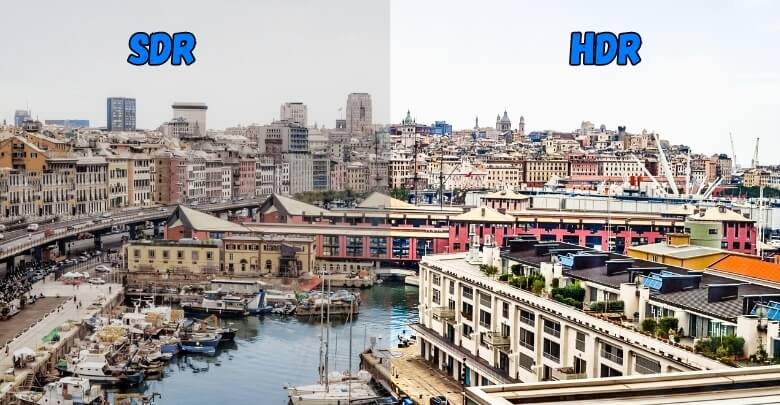
You’re not just capturing one photo when you snap a picture using HDR. Instead, your camera takes multiple shots at different exposures, which are combined to create a single image with unparalleled clarity and depth.
This technique, particularly handy in scenes boasting a wide spectrum of light levels, involves the skillful balance of light and dark. Utilizing top-notch HDR photo editing ensures that no detail is lost in the process. It’s akin to infusing your photos with a touch of reality, rendering them as vibrant as the moment itself.
Do You Need HDR for Photo Editing?
Yes, HDR can be a valuable tool for photo editing. It’s not always necessary, but in certain situations, it can significantly enhance your images. HDR helps bridge the gap between what your camera captures and what your eye sees, making your photos pop with realism.
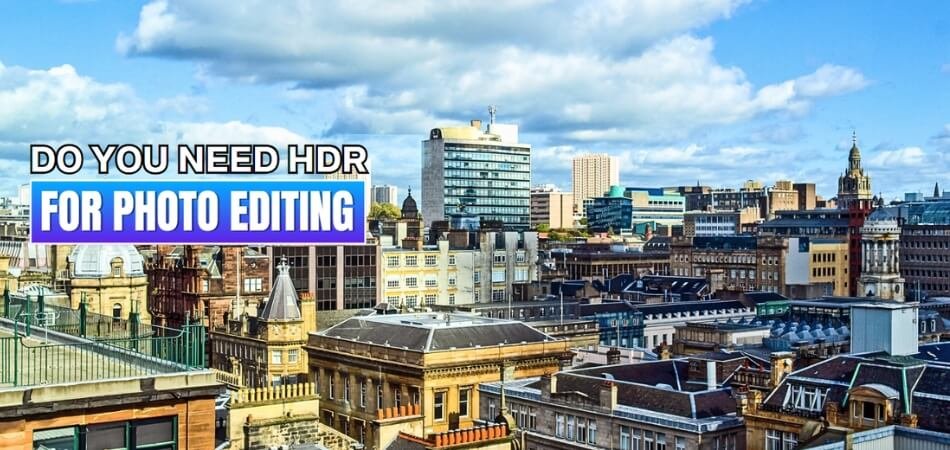
Scene Complexity
In scenes with a wide range of light, from deep shadows to bright highlights, HDR shines. It combines multiple exposures to capture detail across the spectrum. This technique avoids overexposed skies or underexposed foregrounds, balancing the photo perfectly. HDR editing ensures your images reflect the full depth and detail of the scene.
Artistic Expression
HDR isn’t just for clarity; it’s also a creative choice. It allows photographers to push the limits of color, contrast, and light. By manipulating these elements, you can create surreal or hyper-realistic images. HDR editing gives you the tools to bring your artistic vision to life.
Technical Limitations
Not all cameras capture HDR photos natively, and not all scenes require HDR. Recognizing the capabilities of your equipment is essential. If your camera struggles with high-contrast scenes, HDR editing can compensate. However, you should use HDR judiciously to avoid unnatural-looking results.
Final Output Quality
The quality of your final image can benefit greatly from HDR editing. It enhances details that might otherwise be lost in shadows or highlights. For prints or high-resolution displays, HDR can make a noticeable difference. Yet, it’s essential to edit with a light hand to maintain natural-looking outcomes.
While HDR is not mandatory for all photo editing, its application can elevate your photography when used appropriately. It’s about understanding when and how to use it to enhance the visual story you’re telling.
Types of Photos Requires HDR Editing?
HDR photo editing isn’t merely a fancy tool; it’s a bridge to visual excellence, especially in scenarios where lighting plays tricks on your camera. It enhances photos, making them closer to what our eyes can naturally perceive. Certain types of photos benefit immensely from this technique, making HDR photo editing an essential skill for photographers.
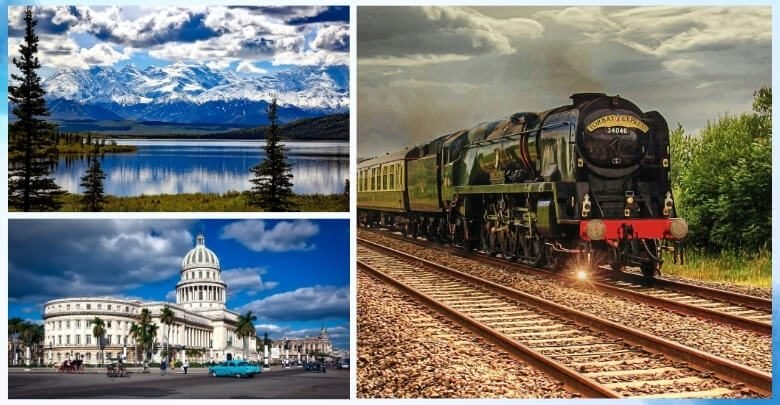
Landscape Photography
Landscapes often feature extreme contrasts between the sky and land, making HDR essential. It ensures skies aren’t washed out and the land is detailed. This technique captures the true beauty of nature, from sunrise hues to the textures of the earth. HDR brings out every element, creating breathtaking scenes.
Architectural Shots
Buildings with intricate details benefit from HDR’s magic. It reveals the texture of materials, from ancient stone to modern glass. Interior shots with mixed lighting conditions are perfect candidates for HDR. This editing method ensures both the interior glow and exterior views are well-balanced.
Low-Light Environments
In dimly lit settings, HDR helps avoid grainy photos or lost details. It combines exposures to illuminate dark areas without overexposing light sources. This is crucial for capturing the ambiance of a scene. HDR preserves the mood of low-light environments, from cozy interiors to twilight landscapes.
High Contrast Scenes
Situations with a mix of deep shadows and bright highlights need HDR. It prevents losing details in dark or light areas. HDR editing makes sure every part of the image is visible and vibrant. It’s ideal for scenes where you want to maintain both shadow details and highlights.
HDR editing is not just a technique; it’s a storytelling tool that brings your photos to life. It’s perfect for capturing the essence of landscapes, the grandeur of architecture, the mood of low-light settings, and the drama of high-contrast scenes. Mastering HDR editing allows photographers to overcome the limitations of their cameras, ensuring their images are as rich and detailed as the moments they capture.
DIY or Hire a Professional for HDR Photo Editing – Which One Should You Choose?
Deciding whether to dive into HDR photo editing yourself or to hire a professional can be a bit of a conundrum. It boils down to a few key considerations: your skill level, the time you can dedicate, and the quality you’re aiming for. Let’s explore both paths to help you make an informed decision.
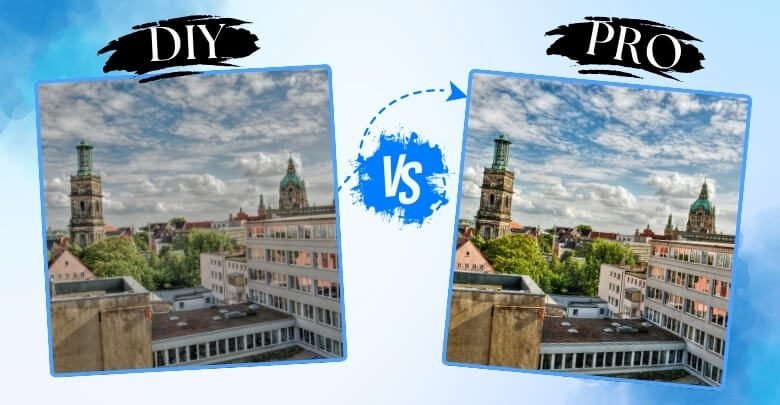
DIY: Unleash Your Creativity
Taking the DIY route in HDR photo editing allows you to experiment and learn at your own pace. If you’re passionate about photography and willing to invest time in learning, this can be an enriching experience. There are plenty of tutorials and software available to get you started. However, be prepared for a learning curve and the potential for trial and error as you master the techniques.
Hiring a Professional: Ensuring Quality and Efficiency
Professionals bring experience, skill, and advanced tools to the table. If you’re working on a project where the stakes are high, such as for commercial use or a significant personal event, hiring a pro can ensure top-notch results. They can save you time and provide a level of polish that might be hard to achieve on your own. This option is ideal for those who prioritize quality and have a budget to accommodate professional fees.
Factors to Consider While Making a Decision
Still confused? Then you can take a moment and consider the following factors, these given factors will surely help you come to a decision.
- Skill Level and Learning Desire: If you’re already proficient in photo editing or eager to learn, DIY might be fulfilling. For those less inclined towards technical learning or without the time, a professional is a better choice.
- Time and Deadlines: Consider how quickly you need the edited photos. Professionals can deliver faster, especially under tight deadlines.
- Budget: Professional editing can be costly. Weigh the investment against the importance and use of the final images.
- End Use of the Photos: For personal enjoyment or non-critical applications, DIY editing may suffice. For commercial or significant personal use, professional quality might be non-negotiable.
Your choice between DIY and hiring a professional for HDR photo editing depends on a mix of personal preference, practical considerations, and the intended use of the photos. If you’re passionate about photography and eager to learn, diving into DIY HDR editing can be incredibly rewarding. On the other hand, if you’re looking for guaranteed quality and have specific requirements or deadlines, enlisting a professional’s help might be the way to go.
Benefits of Using HDR for Editing Your Photos
The HDR technique stands out in the world of photography. With it, your photos go from good to breathtakingly vivid. HDR can add depth and detail to your photos, whether you’re a hobbyist or a pro.
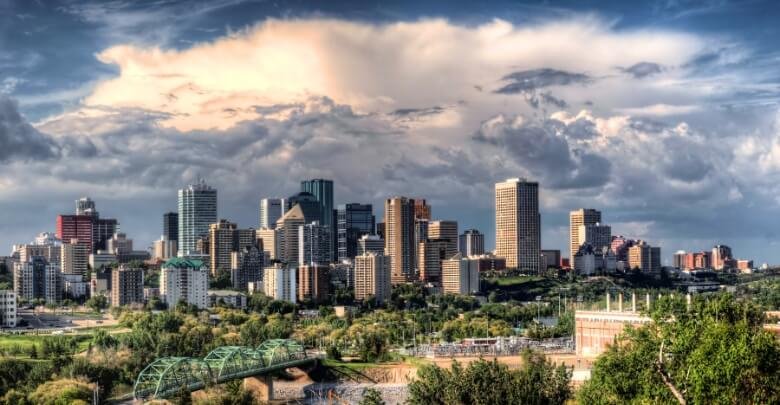
Enhanced Detail in Shadows and Highlights
HDR editing illuminates the details hidden in shadows while preserving the texture in bright spots. This balanced exposure brings photos closer to what your eyes see. It ensures that dark areas are not lost to shadow and that bright areas don’t get washed out. The result is an image rich in detail, across the entire tonal range.
Better Color Accuracy
Colors in HDR photos pop with a vibrancy that’s true to life. This technique enhances the color palette, making the hues more vivid and accurate. It’s particularly noticeable in landscapes, where the green of trees and the blue of the sky become more intense. HDR editing ensures your photos have a dynamic and engaging color profile.
Improved Contrast and Depth
By merging multiple exposures, HDR editing significantly enhances the contrast of your images. This improved contrast adds depth, making the photo appear more three-dimensional. The technique delineates the textures and layers of your scene more clearly. Photos edited with HDR look more compelling and realistic, drawing the viewer into the scene.
Versatility Across Different Lighting Conditions
HDR is invaluable in challenging lighting situations, from dim interiors to bright landscapes. It allows you to capture and edit images in a wide range of conditions. This versatility means you’re not limited by the time of day or weather. HDR editing ensures your photos are stunning, regardless of the natural light available.
HDR editing is a powerful tool that can dramatically improve the quality of your photos. It brings out the beauty hidden in the extremes of shadows and highlights, enriches colors, adds depth, and adapts to various lighting conditions.
For anyone looking to elevate their photography, exploring the benefits of HDR editing is a journey worth taking. It’s not just about capturing moments; it’s about redefining how those moments look.
FAQs About Do You Need HDR for Photo Editing?
When diving into the world of photography, the question of whether HDR is necessary for photo editing often arises. To help clarify, here are some relevant FAQs that shed light on the importance and application of HDR in photo editing.
Do All Photos Benefit From HDR Editing?
Not all photos require HDR editing. It’s particularly beneficial for scenes with high contrast where both the highlights and shadows contain important details. For uniformly lit scenes, HDR might not add significant value and can sometimes lead to unnatural results.
Can HDR Be Applied to Any Photo?
HDR is best applied to photos captured with the technique in mind, using multiple exposures. However, software advancements now allow a single RAW photo to be processed to simulate HDR effects, enhancing details without needing multiple exposures.
Is HDR Editing Difficult to Learn?
HDR editing can be initially challenging due to the complexity of blending exposures seamlessly. However, many modern cameras and software have automated the process, making it accessible to beginners willing to experiment and learn.
Does HDR Editing Require Special Software?
While basic photo editing software may offer some form of HDR processing, specialized HDR software or advanced photo editing tools provide more control and better results. These tools allow for manual alignment, tone mapping, and fine-tuning of the final image.
When Should I Avoid Using HDR in Photo Editing?
Avoid using HDR for fast-moving subjects or when the scene already has balanced lighting. HDR can also make photos look overprocessed if not done subtly, so it’s crucial to use it judiciously to maintain a natural look.
Last Verdict
Every snapshot can reflect the richness and depth of real-life vistas when HDR is used in photo editing. Whether it’s the nuanced shades of a sunset or the intricate details of urban architecture, HDR editing is the key to bringing these scenes to life with stunning clarity and vibrant colors. So, when faced with the question, “Do you need HDR for photo editing?”
For those seeking to push the boundaries of their photographic work, to make images that truly resonate with realism and emotional depth, HDR isn’t just a tool; it’s an essential technique. It allows both novices and professionals alike to transform ordinary photos into extraordinary pieces of art, making every shot not just seen but felt.